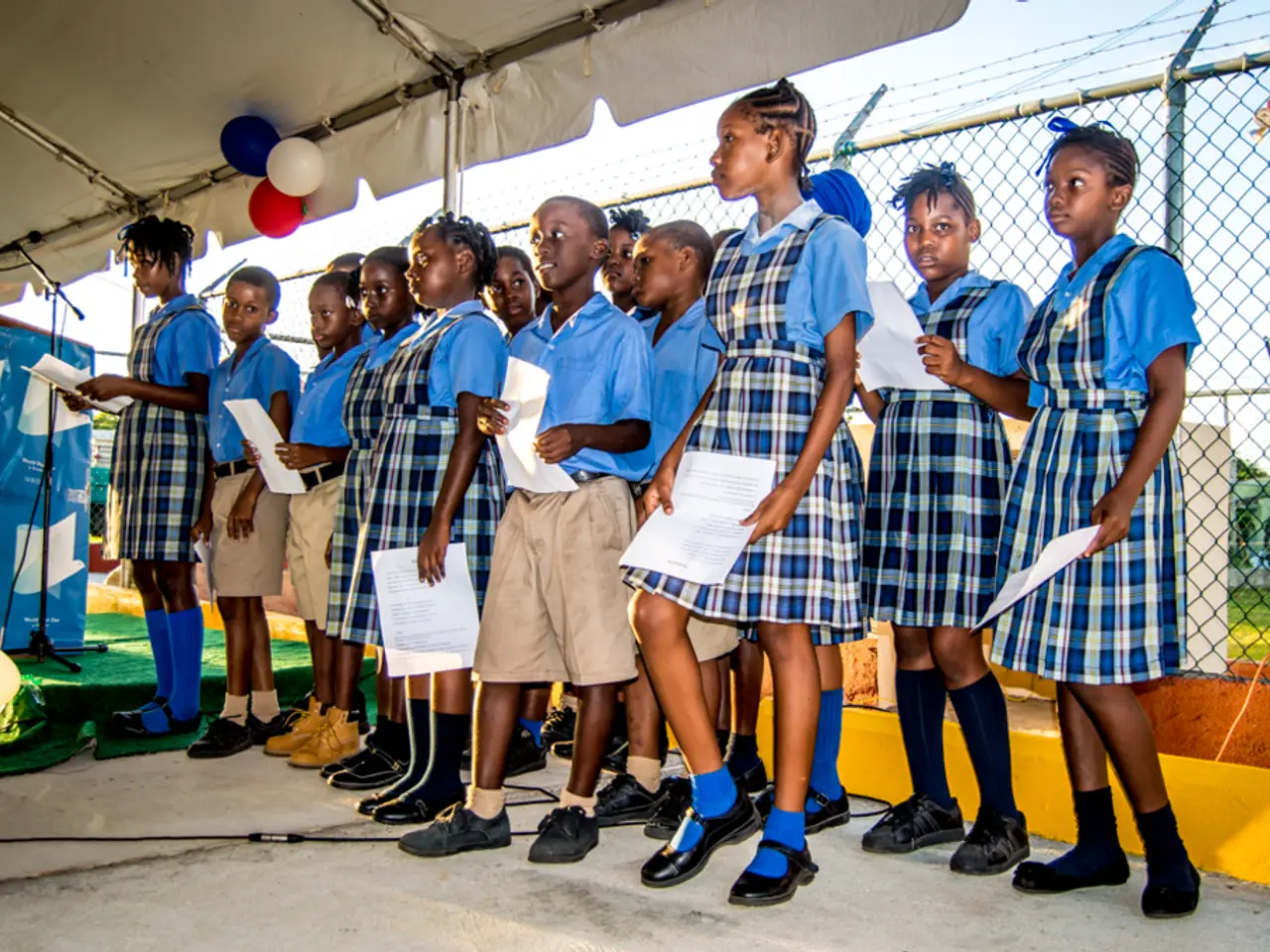Strategies to Overcome Post-Vacation Academic Woes
As the new school year approaches, many children and parents may experience feelings of anxiety and sadness, often referred to as the back-to-school blues. This article offers practical strategies for spotting and addressing these emotions, focusing on conversation strategies, routine adjustments, and coping skills.
Spotting Back-to-School Blues
Children and teens struggling with anxiety or sadness about returning to school may exhibit signs such as clinginess and restlessness, frequent stomachaches or headaches without medical cause, increased irritability or emotional outbursts, changes in eating and sleeping habits, expressing worries or negative thoughts about school, difficulty concentrating, and crying frequently.
Conversation Strategies
Initiating gentle, open-ended discussions is key to inviting children or teens to share their feelings about school without pressure. Normalising anxiety by explaining it as a common reaction to change and new experiences can help validate their emotions. Listening with empathy and avoiding dismissing their concerns are also essential. Asking open-ended questions like "What part of school worries you the most?" or "What would make going back easier for you?" can help children feel heard and understood.
Routine Adjustments
Establishing and maintaining consistent daily routines before and during the school year provides structure and predictability. Incorporating time for physical activity, such as sports or movement breaks, reduces stress and improves mood and concentration. Helping teens organise schoolwork using checklists, calendars, or digital tools tailored to their needs can reduce overwhelm. Creating quiet, low-stimulation spaces for relaxation and down-regulation, employing sensory tools like noise-cancelling headphones or soft lighting when needed, can also be beneficial.
Coping Skills
Practicing co-regulation by engaging in physical activities together, such as walks, stretching, or dancing, can model calm energy and provide support. Teaching simple physical regulation techniques like movement breaks, sensory stimulation, or calm cocooning can help manage emotional energy. Encouraging emotional intelligence by helping children name their feelings and providing positive reinforcement for cooperation and flexibility can also be beneficial. If anxiety or distress persists beyond a few weeks or worsens, seeking professional help is advisable, as ongoing issues may indicate mental health conditions needing treatment like anxiety or depression.
By implementing these strategies, we can create a supportive environment where children and adolescents can express their worries, develop effective coping skills, and transition back to school with greater confidence and resilience. The sources for this article's information are grounded in scientific research and evidence-based practices.
[1] National Institute of Mental Health (2021). Anxiety Disorders. Retrieved from https://www.nimh.nih.gov/health/topics/anxiety-disorders/index.shtml
[2] American Psychological Association (2020). Helping Children Cope with Emotions. Retrieved from https://www.apa.org/topics/children-coping-emotions
[3] Child Mind Institute (2021). Back-to-School Anxiety. Retrieved from https://childmind.org/article/back-to-school-anxiety/
[4] Understood (2021). Helping Kids with Anxiety. Retrieved from https://www.understood.org/en/learning-attention-issues/social-emotional-skill-builders/anxiety/helping-kids-with-anxiety
[5] Centers for Disease Control and Prevention (2021). Physical Activity for Everyone. Retrieved from https://www.cdc.gov/physicalactivity/basics/pa-guidelines/index.htm
- A licensed therapist might recommend implementing these strategies to children and parents struggling with back-to-school blues, as they are based on scientific research and evidence-based practices.
- For parents, educating themselves about the signs of anxiety in teenagers, such as frequent stomachaches, increased irritability, or crying frequently, can help identify the need for professional help, like psychiatry or therapy.
- To tackle mental health issues like anxiety and depression in teens, an integrated approach that includes online therapy, mental health resources, and health-and-wellness practices can be beneficial.
- By learning about conversation strategies, mental health awareness extends beyond parents to the wider community, empowering them to engage in open discussions about mental health and parenting with their children.
- Involving oneself in science-backed activities, like regular physical exercise, can promote mental well-being and serve as a coping mechanism for young individuals dealing with back-to-school blues or other mental health challenges.




